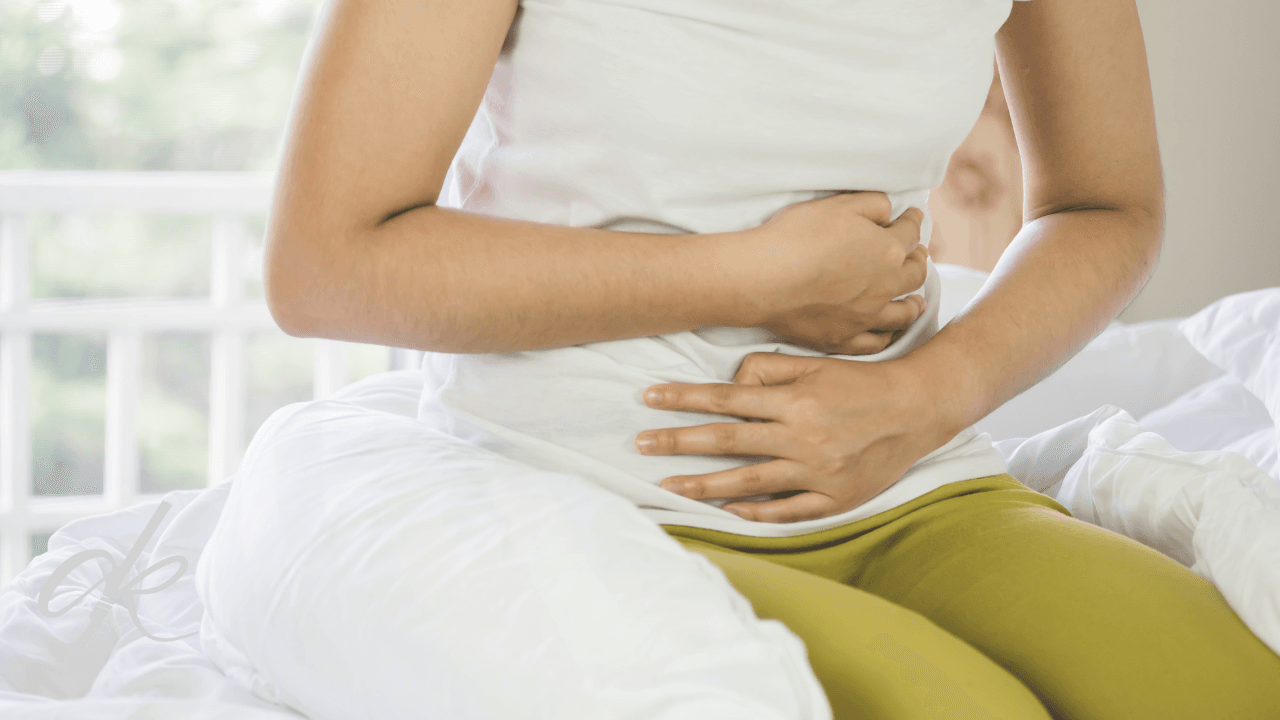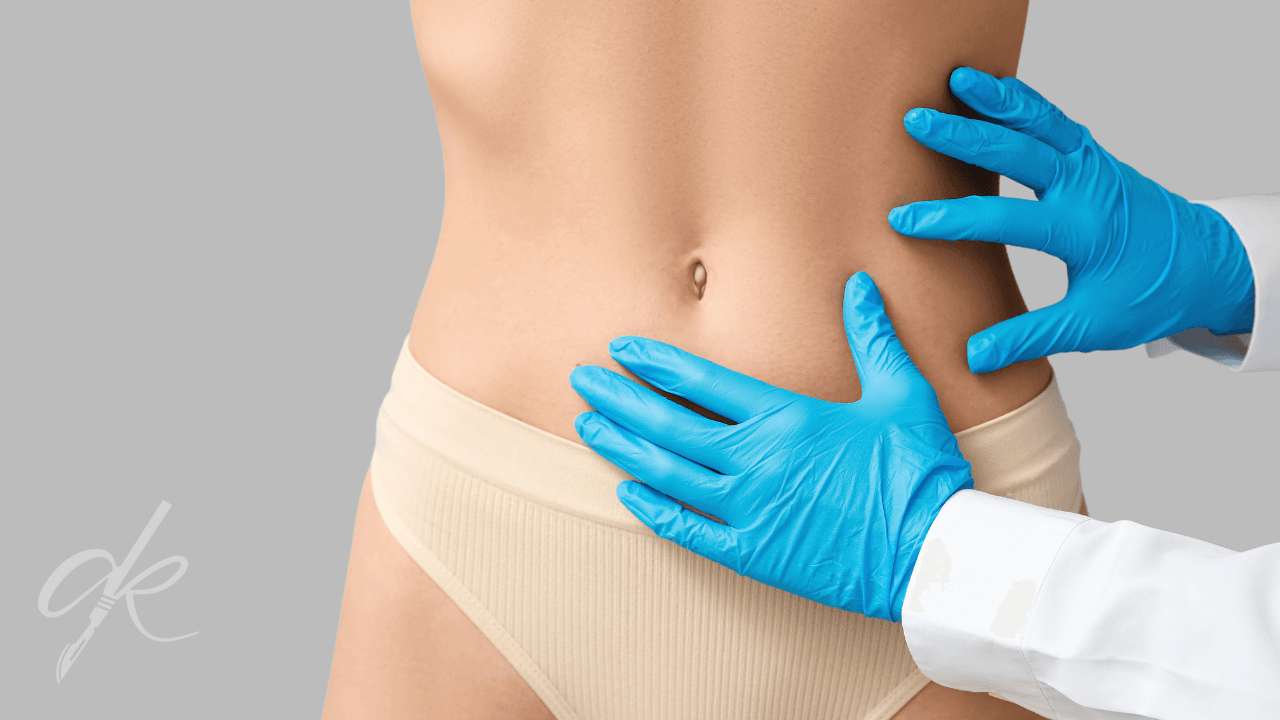Gynecomastia vs. Stubborn Fat: Understanding Male Breast Enlargement with Dr. Ahmet Kaplan
Dear readers, today we’re delving into a topic that can significantly impact men’s quality of life, leading to both physical and psychological discomfort: male breast enlargement. This condition often stems from two distinct causes that are frequently confused: gynecomastia and stubborn fat accumulation. So, what are the differences between these two conditions, how are they diagnosed, and most importantly, what steps should be taken in each scenario? Dr. Ahmet Kaplan, a distinguished plastic surgeon in Istanbul, Turkey, offers his expert insights to answer all these questions in detail, presented in a warm and approachable style.
What is Gynecomastia? The Secrets of Male Breast Tissue
Gynecomastia, literally meaning “woman-like breasts,” refers to the abnormal enlargement of breast tissue in men. This condition is more than just an aesthetic concern; it can signal underlying physiological imbalances. The root cause of gynecomastia often lies in an imbalance between estrogen and testosterone hormones in the body. It’s important to remember that all men have some breast tissue and produce a small amount of estrogen. However, when this delicate balance is disrupted, and estrogen relatively increases compared to testosterone, it leads to the proliferation of glandular breast tissue. This enlargement typically manifests as a firm, rubbery mass felt directly beneath the nipple, which can be tender to the touch.
In-Depth Causes of Gynecomastia: Pieces of a Larger Puzzle
The factors contributing to gynecomastia are quite diverse and can emerge at different stages of life. Let’s explore these causes in detail:
- Hormonal Storms During Puberty: Puberty is a period of significant hormonal transformation for the body. While testosterone levels rapidly rise, some adolescents may experience temporary increases in estrogen levels. This can lead to pubertal gynecomastia. Often, this condition is temporary and resolves on its own as puberty concludes. However, in some cases, especially if the hormonal imbalance is more pronounced, it can become persistent. The psychological impact on young men can be devastating, making early diagnosis and appropriate guidance critically important.
- Aging and Hormonal Shifts: As men age, their testosterone levels naturally begin to decline. Simultaneously, with an increase in body fat percentage, estrogen production can also rise. This process, often referred to as “andropause,” can set the stage for senile gynecomastia. It’s a common cause of breast enlargement in older men.
- The Shadow of Medications: It might be surprising, but certain medications we use can also cause gynecomastia. Diuretics (e.g., spironolactone) used for heart conditions, stomach ulcer medications (e.g., cimetidine), some antidepressants, anxiety medications (e.g., diazepam), chemotherapy drugs, prostate cancer medications, and even illicit steroids and synthetic hormones can trigger this condition. Therefore, if you notice breast enlargement while taking any medication, it is crucial to consult your doctor.
- Signals of Underlying Health Issues: Gynecomastia can sometimes be a symptom of more serious underlying health problems. Liver diseases (especially cirrhosis), kidney failure, hyperthyroidism (overactive thyroid), hypogonadism (decreased testosterone production), and even certain tumors (such as lung, adrenal, or testicular tumors) can disrupt hormonal balance and lead to gynecomastia. For this reason, a detailed medical evaluation is essential in cases of unexplained breast enlargement.
- Obesity and the Role of Fat Tissue: Obesity is closely linked to gynecomastia. Adipose tissue functions like an endocrine organ, containing an enzyme (aromatase) that converts testosterone into estrogen. This leads to increased estrogen levels in obese men, raising the risk of gynecomastia.
- Alcohol and Substance Dependence: Excessive alcohol consumption can lead to liver damage, disrupting estrogen metabolism. Certain substances like marijuana and heroin can also cause hormonal imbalances, triggering gynecomastia.
- Natural Supplements and Herbal Products: Some herbal products and supplements can exhibit estrogen-like effects and contribute to gynecomastia. There are reports suggesting caution with topical use of products like lavender and tea tree oil.
Gynecomastia is typically firm, rubbery, and often tender to the touch. This tenderness can be more pronounced, especially during puberty or active hormonal fluctuations. The most important distinguishing feature is that it contains glandular (breast gland) tissue, unlike mere fatty tissue. This glandular tissue includes fibrous bands, which give the breast a denser consistency.
What is Stubborn Fat Accumulation? The “Disobedient” Fat in Male Breasts
Now, let’s turn to the other condition: stubborn fat accumulation, also known as “pseudogynecomastia” (false gynecomastia). This is an increase in breast size resulting from the excessive accumulation of fat cells in the chest area. The primary causes are generally genetic predisposition, overall weight gain, or a tendency for localized fat deposition. Certain body areas, including the chest, abdomen, and flanks, can be more prone to storing fat, regardless of diet or exercise.
Characteristics of Stubborn Fat: Softness and Malleability
Stubborn fat accumulation differs from gynecomastia with its distinct characteristics:
- Soft and Movable Structure: On manual examination, stubborn fat accumulation has a soft, less dense, and easily movable texture. A firm mass like glandular breast tissue is not felt.
- Challenge with Diet and Exercise: These fats can often be reduced with general weight loss and regular exercise programs. However, true to the word “stubborn,” in some cases, they can remain localized and persistent. This can leave an individual feeling self-conscious about chest fullness, even if they are otherwise slender.
- Solution with Localized Fat Removal Methods: Stubborn fat responds very well to localized fat removal methods, particularly liposuction. With these techniques, excess fat cells can be safely removed from the body.
Crucial Differences Between Gynecomastia and Stubborn Fat: A Guide for Accurate Diagnosis
Understanding the clear distinctions between these two conditions is vital for choosing the correct treatment path. Here’s a comparative table with detailed explanations:
| Feature | Gynecomastia | Stubborn Fat Accumulation (Pseudogynecomastia) |
| Tissue Structure | Firm, rubbery, contains glandular (breast gland) tissue, distinct mass under the nipple | Soft, movable, consists only of fat tissue, diffuse distribution |
| Causes | Hormonal imbalances (estrogen/testosterone), medications, underlying diseases, aging, puberty | Genetic predisposition, general weight gain, localized fat deposition tendency, sedentary lifestyle |
| Treatment Method | Surgical (excision of glandular tissue – mastectomy), rarely hormonal treatments | Liposuction, diet, exercise, lifestyle changes |
| Tenderness | May be painful or tender to the touch, especially in early stages or during hormonal fluctuations | Generally painless, tenderness is rare |
| Nipple Area | Often a noticeable swelling around the nipple (areola), and even indentations/protrusions at the edges of the swelling may be felt | Usually no distinct swelling or mass around the nipple, a smoother contour may be seen |
| Effect of Weight Loss | Generally does not change in size or decreases very little with weight loss; glandular tissue is permanent | Can significantly decrease in size with weight loss |
| Recurrence | Low risk of recurrence after hormonal balance is restored or surgical intervention (if the root cause is eliminated) | Fat accumulation can reappear if weight is regained |
Diagnostic Methods: Finding the Right Path
Accurate diagnosis is the first step in effective treatment planning. A plastic surgeon like Dr. Ahmet Kaplan or an endocrinologist can make a strong preliminary diagnosis through physical examination. Feeling the breast tissue, evaluating tenderness, and assessing the consistency of the tissue are crucial during this examination.
However, definitive diagnosis may require additional tests:
- Blood Tests: To check hormone levels (testosterone, estrogen, LH, FSH, TSH, prolactin, etc.), and liver and kidney functions.
- Imaging Techniques:
- Breast Ultrasonography: The gold standard for detailed examination of breast tissue, distinguishing glandular tissue from fat, and evaluating the structure of any masses.
- Mammography: Can provide additional information, especially in older patients or when cancer is suspected.
- Rarely MRI or CT: May be requested if an underlying disease or tumor is suspected.
Gynecomastia and Stubborn Fat Treatment: Tailored Solutions by Dr. Ahmet Kaplan in Istanbul
Once an accurate diagnosis is established, a personalized treatment plan is created. Dr. Ahmet Kaplan offers advanced treatment options right here in Istanbul, Turkey, ensuring world-class care for his patients.
1. Gynecomastia Treatment: Surgical Intervention is Paramount
Surgical methods are generally paramount in the treatment of gynecomastia. This is because glandular (breast gland) tissue cannot be reduced through diet or exercise.
- Breast Reduction Surgery (Gynecomastia Surgery): This is a surgical procedure that involves the removal of excess glandular tissue and accompanying fatty tissue. The surgery is typically performed under general anesthesia and lasts several hours. Dr. Ahmet Kaplan performs these intricate procedures at his modern clinic in Istanbul, Turkey.
- Surgical Techniques:
- Subcutaneous Mastectomy: In this method, excess glandular tissue and fat are removed through a small incision made around the lower edge of the nipple (areola). This incision leaves a minimal scar that becomes almost imperceptible after healing. If liposuction is also required, liposuction cannulas can be inserted through the same incision or through separate small punctures.
- Liposuction-Assisted Glandular Excision: Especially in cases with dense glandular tissue, liposuction is first used to liquefy and aspirate surrounding fat tissue, followed by the surgical removal of the glandular tissue through a small incision. This combination can provide a smoother result and a shorter recovery time.
- Open Mastectomy: In cases of very severe gynecomastia or when there is significant skin laxity (sagging), a larger incision may be necessary to remove glandular tissue and excess skin. In such cases, nipple repositioning may also be required. While this method can lead to more noticeable scars, it offers dramatic results for severe cases.
- Recovery Process: Mild pain and swelling are normal after surgery. Patients can usually return to normal activities within 1-2 weeks. The use of a special compression garment or bandage helps reduce swelling and allows the skin to adapt to the new contour. Although scars may be noticeable initially, they fade and become less visible over time.
- Surgical Techniques:
- Hormonal Treatments: In early stages, particularly in cases of pubertal gynecomastia, hormonal treatments may be attempted. Medications like tamoxifen or raloxifene can block the effects of estrogen on breast tissue, potentially slowing growth or aiding in reduction. However, these treatments are not always effective, and surgery is often inevitable in advanced cases.
2. Stubborn Fat Treatment: Localized Contouring Takes Precedence
In the treatment of stubborn fat accumulation, minimally invasive or surgical methods targeting fat cells are used. These procedures are also expertly carried out by Dr. Ahmet Kaplan in Istanbul, Turkey.
- Liposuction (Fat Removal): This is the most common and effective method. Fat cells are aspirated using a vacuum through thin cannulas inserted through small incisions. This gives the chest area a more contoured and masculine appearance.
- Techniques: In addition to classic liposuction, technologies like Vaser Liposuction (fat liquefaction using ultrasound energy) and Laser Lipolysis (fat liquefaction using laser energy) can be used. These technologies facilitate easier fat aspiration and can also help with skin tightening.
- Recovery Process: Bruising, swelling, and mild pain may occur after liposuction. The use of a special compression garment accelerates healing. Patients can usually return to work within a few days, with full recovery taking several weeks.
- Laser Lipolysis: Based on the principle of liquefying fat with laser energy. After liquefaction, the fat is naturally eliminated by the body or can be aspirated with thinner cannulas. This method is advantageous due to its minimally invasive nature and skin-tightening effect.
- Diet and Exercise: General weight loss can help reduce stubborn fat. Regular cardio exercises and resistance training can lower body fat percentage, reducing fat accumulation in the chest area. However, these methods may not always be sufficient for genetically localized fat deposits. Healthy eating habits and an active lifestyle are fundamental for maintaining long-term results.
Frequently Asked Questions (FAQs): All Your Questions Answered
In this section, we address the most frequently asked questions about gynecomastia and stubborn fat accumulation, from the perspective of Dr. Ahmet Kaplan.
1. Does gynecomastia go away on its own? Gynecomastia that appears during puberty, being a result of hormonal fluctuations, can often regress on its own, typically within 6 months to 2 years after puberty ends. This is known as pubertal gynecomastia and is usually not a permanent condition. However, gynecomastia cases that arise in adulthood, often due to an underlying hormonal imbalance, medication use, or health issue, are usually permanent and require treatment. If an adult man notices breast enlargement, it’s important to consult a specialist rather than waiting for it to resolve on its own.
2. Can exercise reduce gynecomastia? No, exercise does not reduce gynecomastia (glandular tissue enlargement). This is because gynecomastia is the enlargement of breast gland tissue, not fat tissue. This tissue is sensitive to hormonal effects and does not diminish with diet or exercise. However, if the chest enlargement is due to stubborn fat accumulation (pseudogynecomastia), regular cardio and resistance exercises can reduce overall body fat percentage, decrease these fat deposits, and strengthen chest muscles for a more athletic appearance. Remember, exercise builds muscle and burns fat, but it does not eliminate glandular tissue.
3. Does gynecomastia surgery leave scars? Thanks to modern surgical techniques, scars from gynecomastia surgery are very minimal and tend to fade over time. The surgery is typically performed through a small incision made along the lower half of the nipple (around the areola). This incision is hidden within the natural contours of the nipple, making it hardly noticeable after healing. In more advanced cases or when there is excess skin, a larger incision may be necessary, but experienced surgeons like Dr. Ahmet Kaplan in Istanbul take great care to make scars as inconspicuous as possible. Over time, scars fade and blend into the skin’s natural color.
4. Can liposuction treat gynecomastia? Liposuction alone is not sufficient to treat true gynecomastia. While liposuction removes fat cells, it cannot eliminate the fundamental problem in gynecomastia, which is the glandular (breast gland) tissue. If only fat tissue is removed, a firm and noticeable mass will still remain in the breast area. Therefore, in cases of true gynecomastia, liposuction is often combined with the surgical excision of glandular tissue (mastectomy). This combination targets both fat tissue and glandular tissue, ensuring a smoother and more aesthetic result.
5. Can gynecomastia turn into cancer? The likelihood of gynecomastia developing into breast cancer is very low. Male breast cancer is quite rare, and a direct link with gynecomastia has not been scientifically proven. However, if you notice any sudden firmness in the breast, unilateral enlargement, nipple discharge, skin changes, or pain, these could be signs of breast cancer, and you should definitely consult a specialist. Men with risk factors (family history of breast cancer, genetic predisposition, etc.) may need to be more vigilant. In any case, if you notice any suspicious symptoms or changes, it is always best to consult your doctor.
Confidence Through Accurate Diagnosis and Personalized Treatment with Dr. Ahmet Kaplan in Istanbul
As you can see, male breast enlargement does not always mean the same thing. Gynecomastia and stubborn fat accumulation are two distinct conditions with different causes, characteristics, and consequently, different treatment methods. Making this distinction accurately is crucial for both alleviating unnecessary concerns and choosing the most effective treatment path.
For an accurate diagnosis, it is essential to consult a plastic surgeon or endocrinologist experienced in this field. An expert physician like Dr. Ahmet Kaplan, who practices in Istanbul, Turkey, will thoroughly evaluate your condition with a detailed physical examination and necessary tests, then present you with the most suitable, personalized treatment plan.
If you are experiencing discomfort due to breast enlargement, do not delay seeking help. At our clinic in Istanbul, under the leadership of Dr. Ahmet Kaplan, we offer comprehensive evaluation and examination, along with modern and effective solutions tailored to your needs. Remember, a healthy and confident life is possible with accurate information and the right steps. Don’t hesitate to invest in yourself, because your comfort and happiness are paramount to us. We wish you healthy and happy days!





